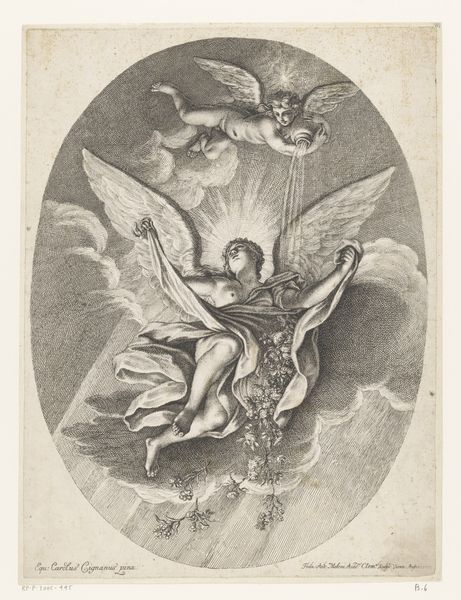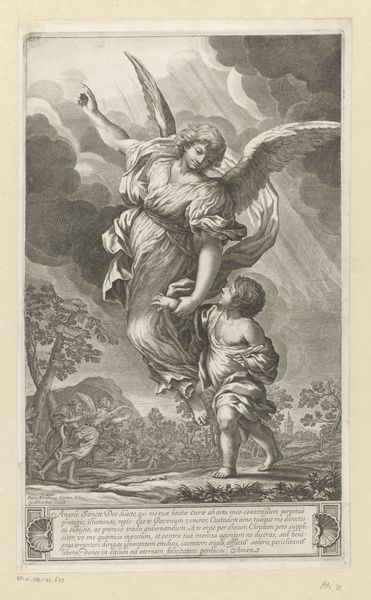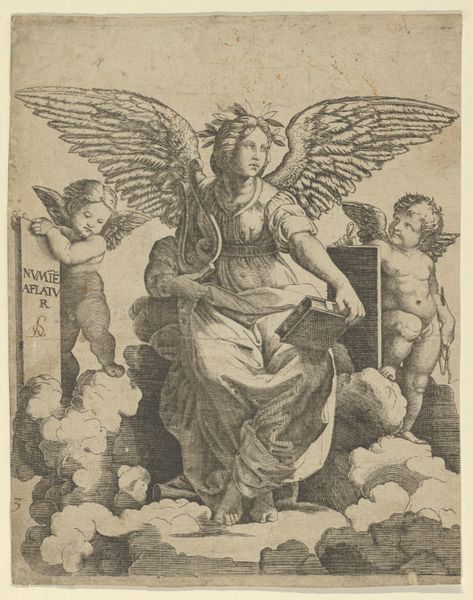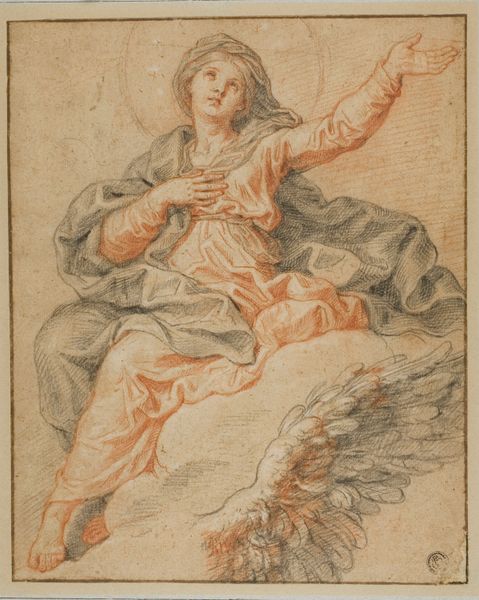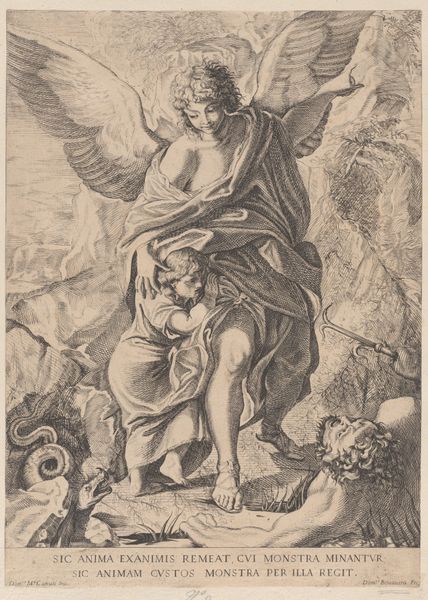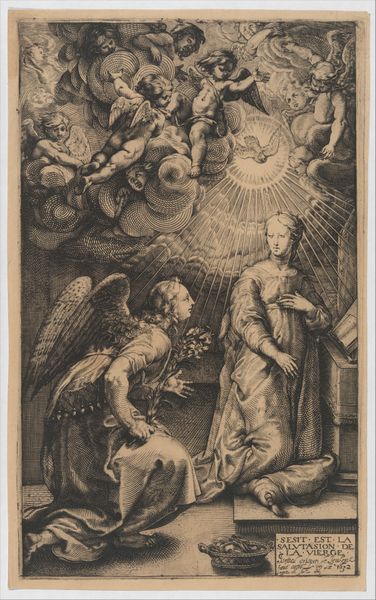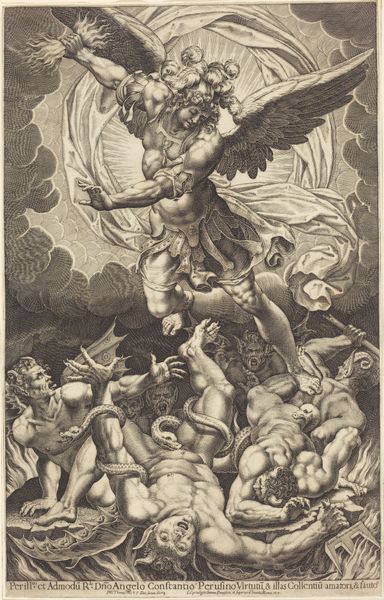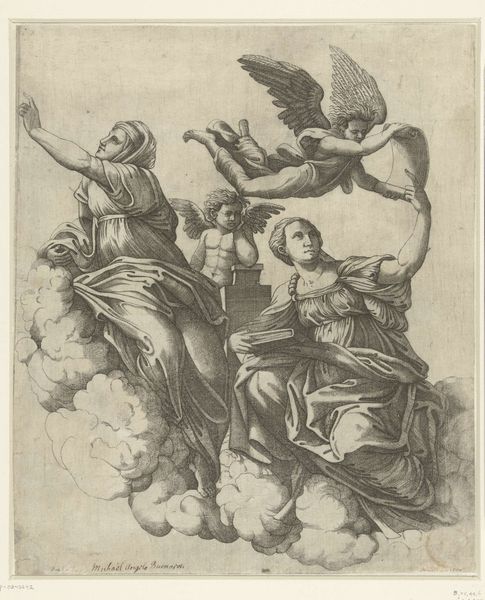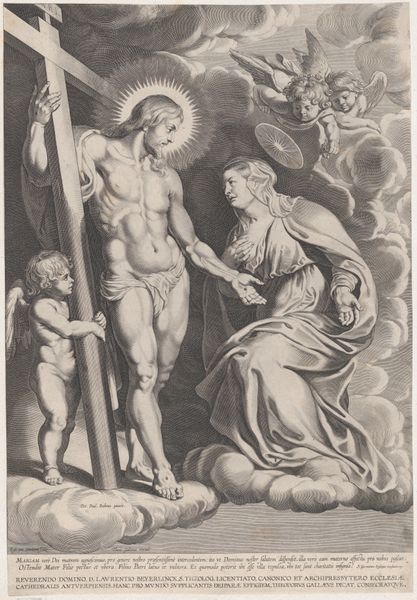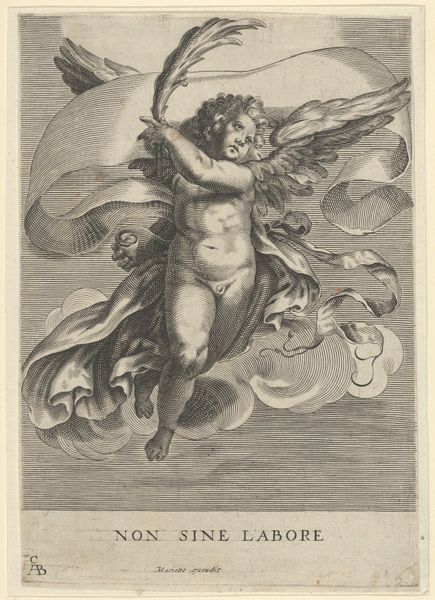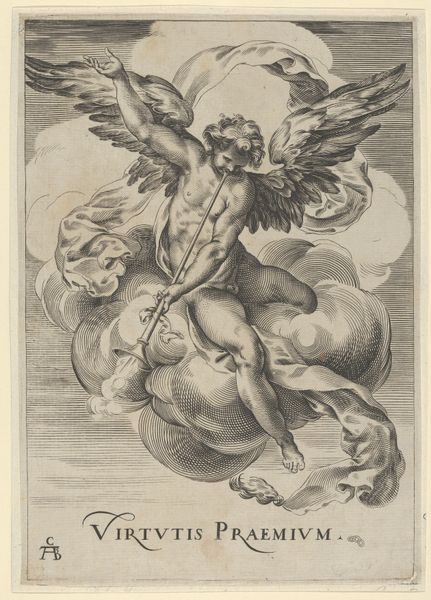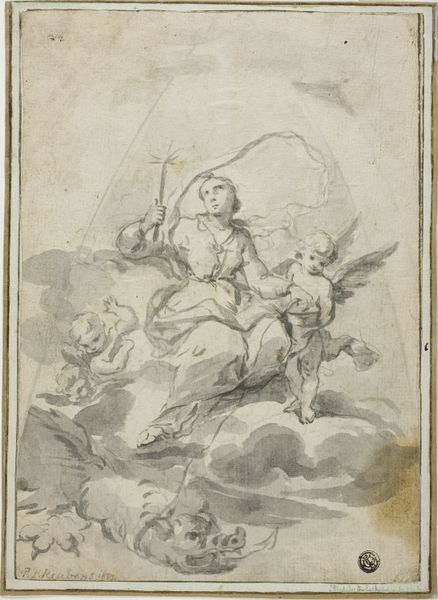
painting
#
allegory
#
baroque
#
painting
#
figuration
#
history-painting
#
portrait art
#
angel
Dimensions: 64 3/4 x 43 1/4 in. (164.5 x 109.9 cm)
Copyright: Public Domain
Art Historian: Editor: Okay, next up we have "Saint Michael the Archangel," created in the 1640s by Ignacio de Ries. It’s a striking painting. The textures of the clothing and wings are fascinating! I’m curious to know what catches your eye about it. Art Historian: Well, looking at this, I am immediately drawn to how the materiality and process communicate power. It’s Baroque, of course, so the theatricality is no surprise, but consider the labor involved. Pigments had to be sourced, ground, and mixed. The canvas stretched. What was the social status of those undertaking this labor and what might that say? Editor: That's an angle I hadn’t considered. So you are suggesting that labor gives another meaning? Art Historian: Absolutely. The application of paint itself is also work. Note the rich fabric depicted, that blue teal and the bright red...how the artist is trying to show quality. Can we examine consumption and display through this painting and perhaps suggest ideas about wealth and the patron commissioning this painting? How does its existence affirm societal structures, eh? Editor: So, even though it depicts a religious scene, the focus on the materials and the labor behind the piece tell a bigger story. It seems like an allegorical assertion of authority more than just an angelic image, then. Art Historian: Precisely! The craftsmanship, the inherent value in the materials chosen...all these reinforce and reflect the status quo. Art doesn't exist in a vacuum. What could studying the paint and cloth used tell us about seventeenth century global trade and access to materials for Ries? That in itself would transform how you read an angel defeating a devil. Editor: I'll admit, I hadn't thought about it that way at all. This materialist perspective gives a much broader view of the artwork. It's not just about good versus evil! Art Historian: Exactly, look at the way even religion is bought and sold in our own time - think about access and availability, now let us look back in history, you can use the materials used to give the scene more meaning, beyond iconography, eh?
Comments
No comments
Be the first to comment and join the conversation on the ultimate creative platform.
